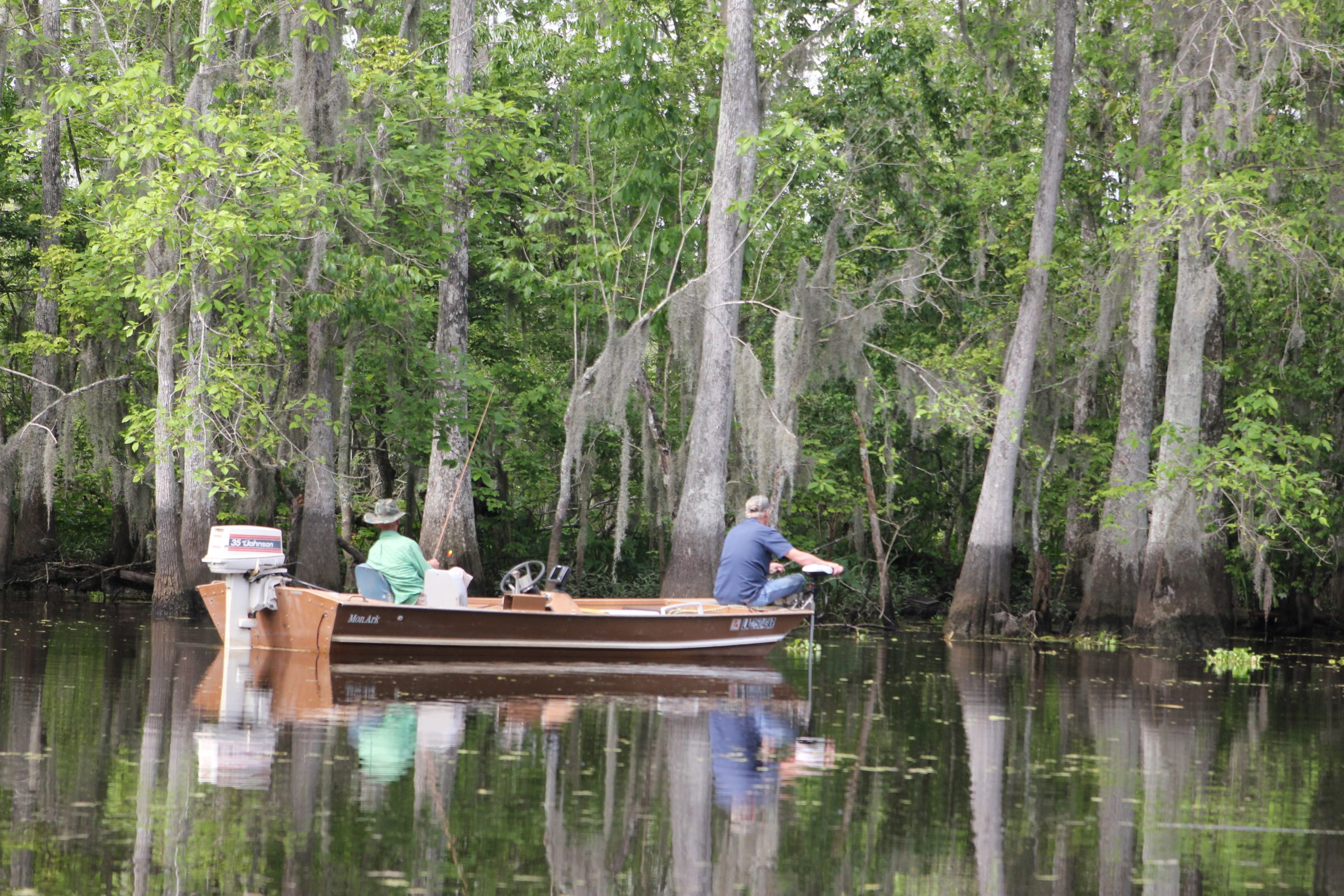Obama’s leadership failing U.S. citizens horribly
September 28, 2011
Francis C. Brien
September 30, 2011Proclaiming that they are tired of waiting for somebody to do something, regional residents took charge of their future this week, and turned what some had said was a lost cause regarding Louisiana’s physical deterioration into hands-on rebuilding of their coastal marshlands.
Corporate, government and environmental groups met today at the Courtyard by Marriott in Houma, under the coordination of America’s Wetland Foundation, to continue implementation of the America’s Energy Coast Initiative.
The public session, called a Blue Ribbon Resilient Communities Forum, was designed to detail plans of action regarding coastal restoration and report on efforts currently taking root in Terrebonne and Lafourche parishes.
“During the forum, AWF will facilitate stakeholders in assessing the community’s vulnerabilities by sharing research findings from a $4.2 million Entergy study that shows the Gulf Coast will suffer $350 billion in losses of assets over the next 20 years if nothing is done to protect [the] Lafourche/Terrebonne area,” AWF spokesman John Hill said.
Hill also confirmed plans to report on what AWF organizers called a hugely successful restoration project that took place Thursday through Saturday along Island Road near Isle de Jean Charles.
“We were expecting maybe 50 people, but we [will end up having] more than 350 over the course of three days,” said AWF project manager Buddy Boe on Friday.
Volunteers ages 9 to 81 who participated in the assembly and positioning of floating islands, designed to act as starters in marshland restoration, at the entrance to a remote fishing village where 75 Native Americans, down from 320 in 2002, remain after years of having their land eaten away natural and manmade influences.
Now regional industry and community members have come together to work with nature and secure a future for their families, neighbors and state.
“This is wonderful,” said 81-year-old retiree and volunteer Herb Johnson of Houma. “I think it is wonderful, all these folks down here and there are a lot of people. This is something that needs to be done. We’re all worried about the environment so doing this is something that we are taking seriously.”
Under the supervision of AWF and Martin Ecosystems, volunteers from Shell, Entergy, area public schools, and regional governments joined other parish residents in planting and anchoring more than 1,600 linear feet of floating island mats that will function as starters for sediment buildup and vegetation growth in areas where open water has taken over marshland.
Proven successful in areas of southern Lafourche Parish, the technology that makes use of recycled plastic formed into woven planters, each containing two varieties of native grasses. The mats are linked together and anchored in a terrace configuration to build a floating island.
The Isle de Jean Charles project is different from previous efforts in that it is the first time that floating islands have been positioned in open water more than 100 feet from existing shore.
Roots from plants in the mat are expected to grow to the floor of this waterway, a depth between 3 and 4 feet, and take root. From there, land buildup and the spreading of vegetation are expected to fill a gap between the floating island and similar starter mats anchored off the side of Island Road. Notable results are expected to be seen in approximately 1.5 years.
In the past, business has been blamed for much of the marshland loss in Louisiana. Now corporations are assisting with funding and manpower toward rebuilding the environment.
“It’s an honor to help with something like this,” Shell Pipeline Co. Operations Supervisor Barry Gilmore said as he positioned plants into the mats. “I live in this area so anything we do to protect ourselves is what we are looking for. I am thankful that Shell gave me the opportunity to come out here and donate my time.”
“We are all about the Louisiana coastline from Calcasieu to St. Bernard [parishes],” Entergy spokesman Henry Gernhauser said at the planting site. “We had 132 employees here partnering with America’s Wetland through an environmental initiative to try and restore the coast, which is vital to this area as well as the nation with the oil and gas industry. This new technology might be what takes off and becomes the thing that restores our coast.”
Grenhauser and Gilmore agreed that there was a bit of irony involved in making the use of plastics, often the scourge of environmentalists, as the anchor product to restore a natural setting.
The point of using plastic forms, according to Martin Ecosystems marketing director Jason Martin is that they will not deteriorate in wave motion and remain a solid base for sediment enhancement and plant growth.
“It is ironic,” Grenhauser said. “Recycling is a very important to conservation. There are a lot of plastic bottles out here today [being used as water containers] and those may be used for future projects.”
Traditional Chief Albert Naquin of the Biloxi-Chitimacha-Choctaw Nation said he liked the rebuilding project, but feared Native Americans were being exploited by those naming them the beneficiaries of this work while having ulterior motives.
“It’s a fight between people who want to do right and the environmentalists,” Naquin said. “We can’t do anything because the environmentalists are afraid we are going to kill a snail or there are too many mosquitoes or something. This island is being exploited because [environmentalist groups] get money to help the Indians survive. This [restoration project] is on the north side of the island and the canals are closed off on both ends. This is going to serve a purpose to the hunters and fishermen, but it is not for the people of the island.”
“Everybody is entitled to believe what they want to,” United Houma Nation Principal Chief Thomas Dardar Jr. said in response to Naquin’s comments. “If you look out here, this is land. If you are building land, how can that be negative?”
Dardar said if the floating islands are able to help generate land and vegetation as designed, more additions could be added in a couple of years to what was built on that day and eventually expanded around the island.
“This is beautiful,” he said. “We got a whole lot of people here and this is not a study. That’s the big thing because a lot of these projects are studied to death. This thing right here is dirt being turned over, hands on, young people involved, companies involved, and this is good for the community, good for our spirits and good for our culture. It is a beginning. I am impressed.”
Adults participating in the floating island planting consistently said they were impressed with the participation of students from Pointe-aux-Chenes Elementary School and Montegut Middle School. Students themselves said they were glad to be taking part in coastal restoration.
“I got really dirty and I made a very big achievement and I helped build a new marsh and made homes for the fish and animals that live in the water,” said 10-year-old Anastasia Billiott.
“They might say ‘I’m happy for you, and I hope you make them all good,'” 9-year-old Matthew Bordelon said of what his parents would say about his participating in the floating island project.
“I think it is awesome that we are helping the marshes and the fish,” added 10-year-old Kelsey Clement. “If we don’t have this, we won’t have food and we won’t be able to live in a special place called Louisiana.”
“Here is a project that they can put together, put it in water, attach by cables and watch it grow in the future,” Terrebonne Parish President Michel Claudet said as he visited with younger and older volunteers working at the job site. “We will have many more of these in the future.”
Theo Chaisson operates the Isle de Jean Charles Marina and said the area has changed significantly during his 74 years of living there. “Erosion has changed it,” he said. “The planting [of floating islands] ain’t going to hurt nothing. If it works there they need to come farther this way. It will help the Pointe-aux-Chenes people [where it is now], but not us. If they plant closer to here it would help. If these companies didn’t think it was worth it or if it wouldn’t work they wouldn’t spend the money to do it.”
“This project started as a one day intended event and exploded,” Boe said. “We went from plans of planting 800 linear feet of these islands to more than 1,600. This is [part of AWF’s] mission of not only creating public awareness, not only rebuilding Louisiana’s coast, but connecting everyone. That is how we are going to fix this in a practical sense. In an emotional sense, we are protecting a cultural asset with the Isle de Jean Charles Native American community that has been left outside the hurricane protection levee system and told to fend for themselves.”
AWF efforts, according to Boe, are a matter of using multiple sources to restore both the coast and culture of Louisiana.
“The $150,000 floating island project at Isle de Jean Charles is one example of corporate, public and private contributors donating both money and personal time in their future,” Boe said.
“It is easy to say it is expensive,” Boe added. “But once this technology has proven successful there is a fixed cost to a square foot. It is all part of a bigger picture. Will this project alone protect the Island? Absolutely not. Will this project help turn back the clock and rebuild the land that the members of that community have used for generations? Yes. Is it creating away awareness? Absolutely.
“There are trigger events that have to occur to make people aware of what has become an American tragedy. Our goal is not to turn back the clock but tap into a cultural asset. This is just a small part of where we are showing marshlands can be saved and land saved before it is lost forever. It is part of a process.”
While taking an end-of-the-workday survey of the plantings, Dardar noticed an immediate indication of wildlife returning to the marshland vegetation when a crab connected itself to one of the floating island mats.
“Look there,” Dardar said, “nature is already happy with it.”
Shell employees (from left) Andy Wellbaum, Josh Etkind and Ashley Harrison get their hands dirty along with more than 350 volunteers in constructing and positioning floating islands at Isle de Jean Charles. MIKE NIXON













